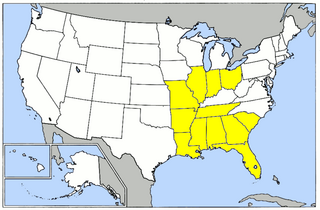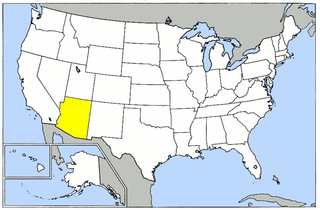
Vance Air Force Base is a United States Air Force base located in southern Enid, Oklahoma, about 65 mi (105 km) north northwest of Oklahoma City. The base is named after local World War II hero and Medal of Honor recipient, Lieutenant Colonel Leon Robert Vance Jr.

Sequoia Field Airport is a county-owned, public-use airport located eight nautical miles (15 km) north of the central business district of Visalia, a city in Tulare County, California, United States.

The United States Army Air Forces during World War II had major subordinate Commands below the Air Staff level. These Commands were organized along functional missions. One such Command was the Flying Training Command (FTC). It began as Air Corps Flying Training Command on 23 January 1942, was redesignated Army Air Forces Flying Training Command (AAFTC) on 15 March 1942, and merged with Army Air Forces Technical Training Command to become Army Air Forces Training Command on 31 July 1943. Continuing service after the war, it was redesignated Air Training Command on 1 July 1946. During the consolidation of Air Force Major Commands in the retrenchment of the 1990s, Air Training Command assumed control of Air University and became Air Education and Training Command on 1 July 1993—today's Air Education and Training Command (AETC), which celebrated its 75th anniversary 23 January 2017. see the Lineage and honors statement for AETC.

Bruce Field is a city-owned public-use general aviation airport located five nautical miles southwest of the central business district of Ballinger, a city in Runnels County, Texas, United States.

Arledge Field is a public general aviation airport located approximately 4 miles (6.4 km) east of Stamford, Texas. Owned by the city of Stamford, it provides general aviation service. Approximately 80 aircraft use the airport on a weekly basis.

During World War II civilian flying schools, under government contract, provided a considerable part of the flying training effort undertaken by the United States Army Air Forces.

Army Air Forces Eastern Flying Training Command (EFTC) was a unit of the United States Army Air Forces. It was assigned to the Army Air Forces Training Command, stationed at Maxwell Field, Alabama. It was inactivated on 15 December 1945.

Flying Division, Air Training Command, was a training formation of the United States Air Force. The unit was established in 1926 as the Air Corps Training Center to be the primary pilot training center for the Air Corps. It was reorganized into one of three training commands created by the Office of the Chief of the Air Corps in 1940 to accommodate the large number of air cadets being recruited as a result of the expansion of the corps after the fall of France. During World War II, thousands of cadets attended various flight schools throughout the Central United States being trained as pilots for fighters, bombers and transports. It also trained the navigators, bombardiers and gunners necessary for the bombers to attack enemy targets in the combat areas overseas. After World War II, it became the primary pilot and aircrew training unit of the United States Air Force Air Training Command.

The 29th Flying Training Wing was a wing of the United States Army Air Forces. It was last assigned to the Western Flying Training Command, and was disbanded on 16 June 1946 at Napier Field, Alabama. The wing controlled World War II Phase One primary flying training units of the Army Air Forces Training Command. Headquartered at Moody Field, Georgia for most of its operational service, it controlled contract civilian-operated pilot schools primarily in the Southeastern United States.

The 36th Flying Training Wing was a wing of the United States Army Air Forces. It was last assigned to the Western Flying Training Command, and was disbanded on 1 November 1945 at Santa Ana Army Air Base, California.

The 78th Flying Training Wing was a wing of the United States Army Air Forces. It was last assigned to the Central Flying Training Command, and was disbanded on 30 June 1945 at the San Antonio Aviation Cadet Center, Texas.

The 81st Flying Training Wing is an inactive United States Air Force unit. It was last assigned to the Western Flying Training Command, and was disbanded on 1 November 1945 at the Santa Ana Army Air Base, California.

The 74th Flying Training Wing was wing of the United States Army Air Forces. It was last assigned to the Eastern Flying Training Command, and was disbanded on 30 December 1945 at Maxwell Field, Alabama.

The 37th Flying Training Wing is an inactive United States Army Air Forces unit. It was last assigned to the Western Flying Training Command, and was disbanded on 16 June 1946 at Luke Field, Arizona.

The 77th Flying Training Wing was a wing of the United States Army Air Forces. It was assigned to the Central Flying Training Command, and was based in Texas between 1943 and its disbandment on 16 June 1946.

The 33d Flying Training Wing is an inactive United States Army Air Forces unit. It was last assigned to the Central Flying Training Command, and was disbanded on 13 October 1946 at Randolph Field, Texas.

The 79th Flying Training Wing was a unit of the United States Army Air Forces. It was last assigned to the Eastern Flying Training Command, and was disbanded on 16 June 1946 at Midland Army Airfield, Texas.

The 80th Flying Training Wing was a training wing of the United States Army Air Forces. It was last assigned to the Central Flying Training Command, and was disbanded on 16 June 1946 at Ellington Field, Texas.

The 28th Flying Training Wing was a unit of the United States Army Air Forces. It was last assigned to the Eastern Flying Training Command, and was disbanded on 30 December 1945 at Craig Field, Alabama.

The 30th Flying Training Wing was a training wing of the United States Army Air Forces. It was last assigned to the Flying Division, Air Training Command, and was disbanded on 13 October 1946 at Randolph Field, Texas.




















